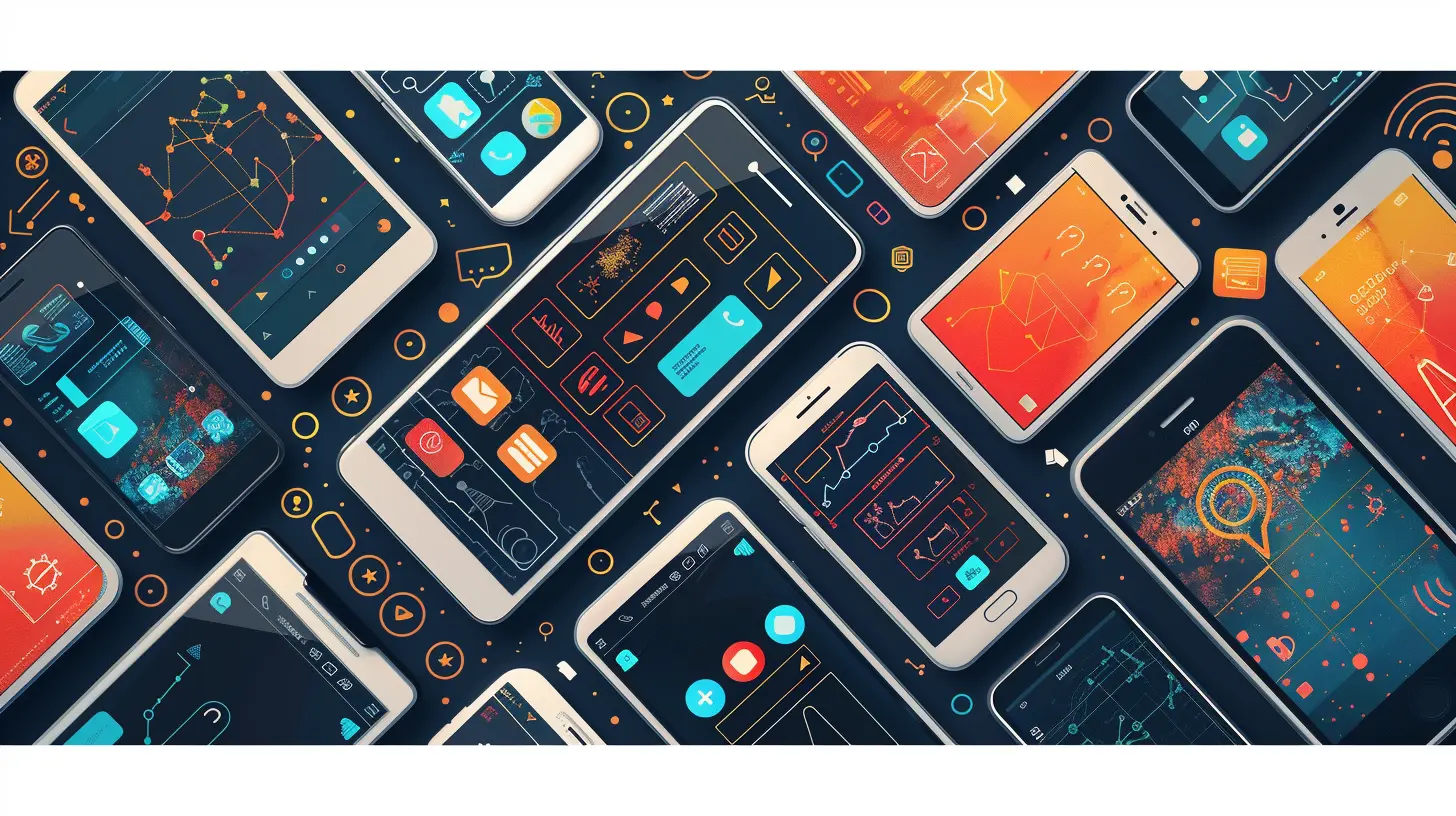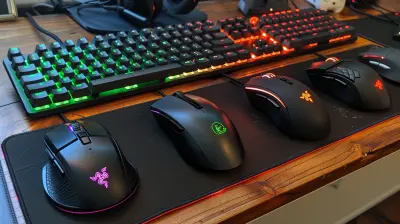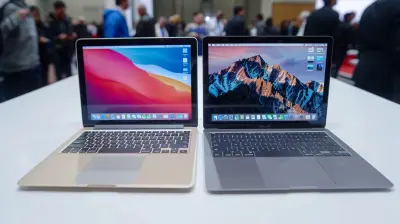How Mobile Tech is Revolutionizing Education and Learning
28 October 2025
Let’s face it—education isn’t what it used to be. Gone are the days when learning stopped outside the classroom or when students had to carry tons of heavy books in their backpacks. Thanks to mobile technology, education has broken free of its old-school shackles and stepped into the fast-paced, digital age. It's fast, flexible, and frankly, fascinating.
So, what exactly does this tech-fueled transformation look like? Buckle up, because we’re about to dive deep into how mobile technology is turning the traditional education system on its head—for the better.

The Digital Classroom in Your Pocket
Remember when you needed a desktop or laptop to access online learning? Yeah, not anymore. Mobile phones and tablets have become modern learning hubs. They’ve miniaturized the classroom and stuffed it into a device that fits in your hand. Insane, right?From apps that explain algebra step-by-step to platforms offering courses from Ivy League schools, mobile devices now serve as personalized learning assistants. They make “anytime, anywhere” learning a reality. Whether you’re stuck on a bus, chilling at a coffee shop, or lying in bed, education is just a few taps away.

Learning On-the-Go: The Rise of Microlearning
You ever try squeezing in a quick YouTube video before work or binge a podcast during a workout? That’s microlearning in action. Mobile tech has encouraged this bite-sized approach to education, breaking complex topics into snackable, digestible chunks.Why does this matter?
Because it fits seamlessly into our busy lives. Students and adults alike can now learn in short bursts—during a lunch break or waiting in line at the grocery store. Over time, these bits and pieces add up, reinforcing knowledge without the burnout.

Mobile Learning Apps: The New Teachers
Let's talk apps. There’s a mind-blowing number of educational apps available today, and they’re doing wonders for learners of all ages.- Duolingo gamifies language learning so well, it’s become a bit of a cult favorite.
- Coursera and edX bring university-level courses to your phone.
- Khan Academy offers everything from math to art history, completely free.
- Quizlet lets users create and study flashcards on any topic imaginable.
These aren’t just tools; they’re entire ecosystems. Most of them are interactive, personalized, and adaptive—meaning they tailor the content to your learning pace and style.

Bridging the Education Gap
Mobile tech isn’t just about convenience. It’s also about accessibility. In parts of the world where traditional education isn’t as reachable, mobile phones are stepping in as equalizers.Even in remote and underserved areas, smartphones are more common than textbooks. By providing access to digital content, videos, and even live classrooms, mobile tech is leveling the educational playing field. Kids in villages in India or rural schools in Africa can now access world-class learning material. Isn’t that phenomenal?
Real-Time Feedback and Instant Gratification
Our brains are wired for rewards. That’s why getting instant feedback is so satisfying. And mobile learning does just that.Whether it’s a quiz that instantly tells you how you did or an app that tracks your progress and celebrates your streaks, mobile education taps into that dopamine-driven reward system. And that’s powerful. It keeps learners engaged, motivated, and hungry for more.
Personalized Learning? You Bet!
One-size-fits-all doesn’t work in education. Mobile tech understands this and adapts. AI-driven learning apps adjust difficulty levels, suggest topics for review, and even customize learning paths based on performance.Think of it like a playlist that learns your taste in music—only this one fine-tunes your curriculum. It makes learning way more effective and a lot less frustrating.
Collaboration in the Palm of Your Hand
Have you noticed how easy it is to connect these days? Mobile tech brings that same interconnectivity to learning. Students can chat with classmates, join study groups, or collaborate on projects in real time, all from their phones.Apps like Slack, Zoom, Google Meet, and Microsoft Teams have become default tools for online education. They’ve blurred the lines between classroom walls and the wider world, making it easier for group discussions, peer reviews, and live Q&A sessions to happen from anywhere.
AR and VR: Turning Lessons into Experiences
Now we’re getting futuristic. Augmented Reality (AR) and Virtual Reality (VR) are taking mobile learning into a new dimension—literally.Picture this: a history student can use their smartphone to walk through ancient Rome in 3D, or a biology student can explore the human body by navigating through organs using a VR headset linked to their phone. That’s not just education—it’s an experience.
These immersive learning tools are redefining how we understand and retain complex information by engaging multiple senses at the same time.
Accommodating Diverse Learning Styles
Visual learners love videos. Auditory learners prefer podcasts. Kinesthetic learners enjoy interactive simulations. Mobile tech caters to all of the above.With endless forms of content—videos, audio lessons, interactive quizzes, games, ebooks—the learning experience becomes as unique as the individual using it. It’s like education has stopped trying to force everyone into the same mold.
Gamification Makes It Addictive (In a Good Way)
Let’s be real—most of us love games. Mobile education platforms have borrowed gaming elements like leaderboards, achievement badges, streak counters, and progress bars to make learning addictive.This kind of gamification turns learning from a chore into a challenge. It’s more engaging, less boring, and helps users stick with their goals. Winning while learning? Yes, please!
Parental Involvement: Easier Than Ever
For younger learners, mobile tech has also made it easier for parents to get involved. There are apps that track student progress, notify parents of assignments, and even offer tips to help with homework.Instead of being in the dark about what their kids are learning, parents now have front-row seats—and tools to help guide their children’s educational journey.
Empowering Teachers with Data
Teachers aren’t being left out of this tech party. Mobile platforms give educators valuable insights into each student's progress and struggles. With this real-time data, teachers can identify learning gaps, adjust lesson plans, and offer personalized feedback.Mobile apps also reduce administrative burdens. Attendance? Tracked. Homework? Submitted online. Communication with parents? Just a message away. This gives teachers more time to focus on what really matters—teaching.
Lifelong Learning is the New Norm
Let’s not forget the grown-ups. Education no longer stops after college. Thanks to mobile tech, continuous learning has become a lifestyle. Whether it's mastering Excel for that job switch or picking up a new language for travel, mobile learning makes it so easy to keep growing.In a world that evolves faster than ever, being a lifelong learner isn't just an option—it's essential. And mobile tech is the friendly companion helping us stay sharp.
Challenges That Still Exist
Of course, it’s not all sunshine and rainbows. Mobile learning isn’t perfect. It comes with its own set of challenges:- Screen Fatigue: Too much screen time can cause health issues and affect attention spans.
- Digital Divide: Not everyone has consistent access to mobile devices or high-speed internet.
- Distractions: Let’s be honest—TikTok and Insta are a constant temptation.
However, awareness and smart design choices in educational apps can help navigate most of these hurdles.
The Road Ahead: Smarter, More Immersive Learning
What’s next? We're heading toward an era of smarter education—AI tutors, immersive VR classrooms, real-time translation for global classes, and predictive analytics to enhance learning outcomes.As mobile tech keeps advancing, education will become more personalized, accessible, and engaging than ever before. Imagine a world where every learner, no matter where they are or what they struggle with, has a tailored education right in their pocket.
That’s not just revolutionary—it’s transformational.
Final Thoughts
Mobile technology isn’t just reshaping how we consume content—it’s completely flipping the script on how we learn. Its impact on education is profound, touching everything from accessibility and engagement to personalization and performance.Whether you’re a student, parent, teacher, or lifelong learner, the shift toward mobile learning opens doors we never even knew existed. And the best part? We're only just getting started.
So the next time you pull out your phone, remember—it’s not just a device to scroll memes or text your group chat. It’s a portal to learning, growth, and endless possibilities.
all images in this post were generated using AI tools
Category:
Mobile TechnologyAuthor:

Kira Sanders
Discussion
rate this article
1 comments
Allegra McCallum
This article beautifully captures the transformative power of mobile tech in education. It's inspiring to see how these advancements are making learning more accessible and engaging for students everywhere. Excited for the future!
November 1, 2025 at 4:32 AM

Kira Sanders
Thank you! I’m glad you found the article inspiring. The potential of mobile tech in education is indeed exciting!

